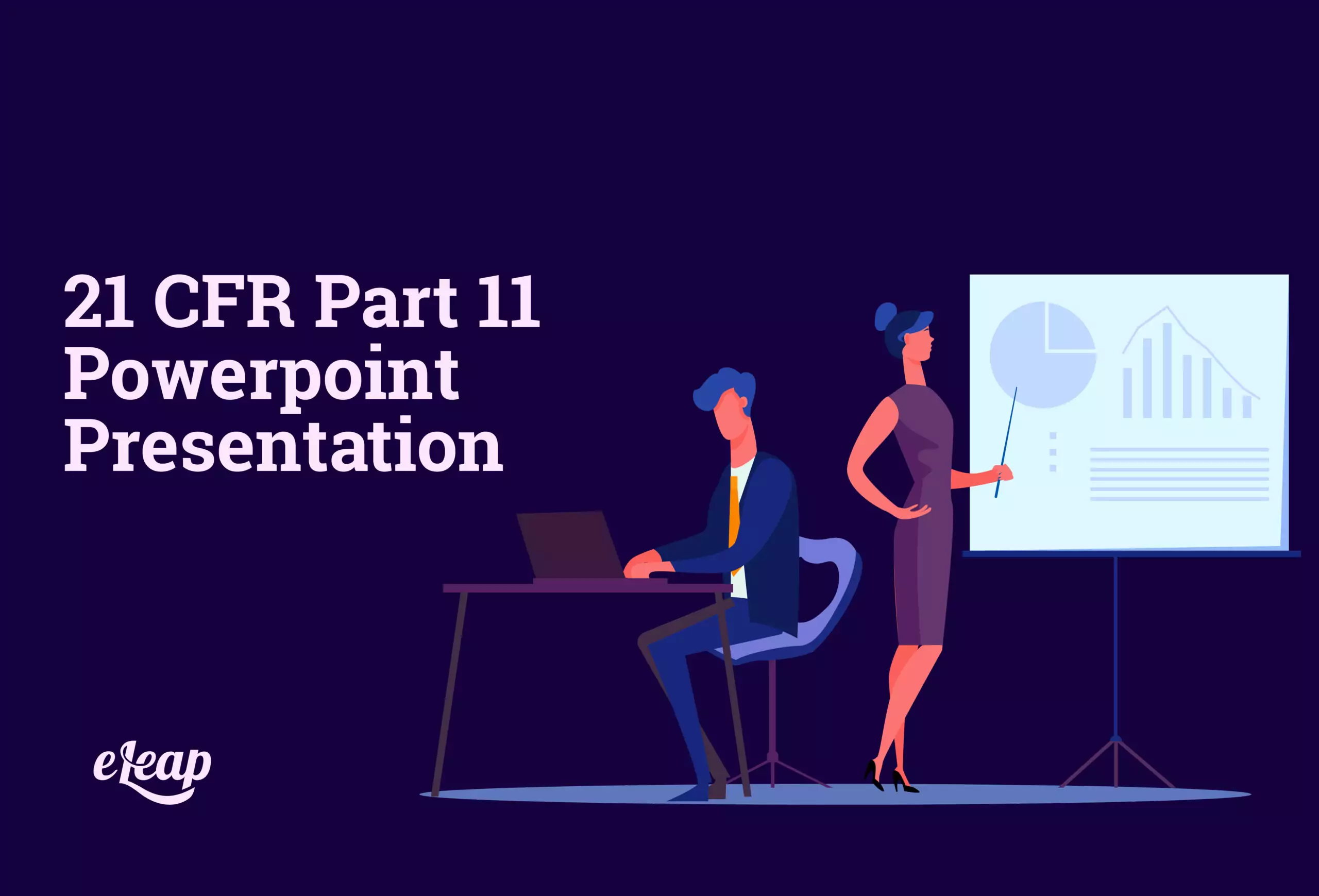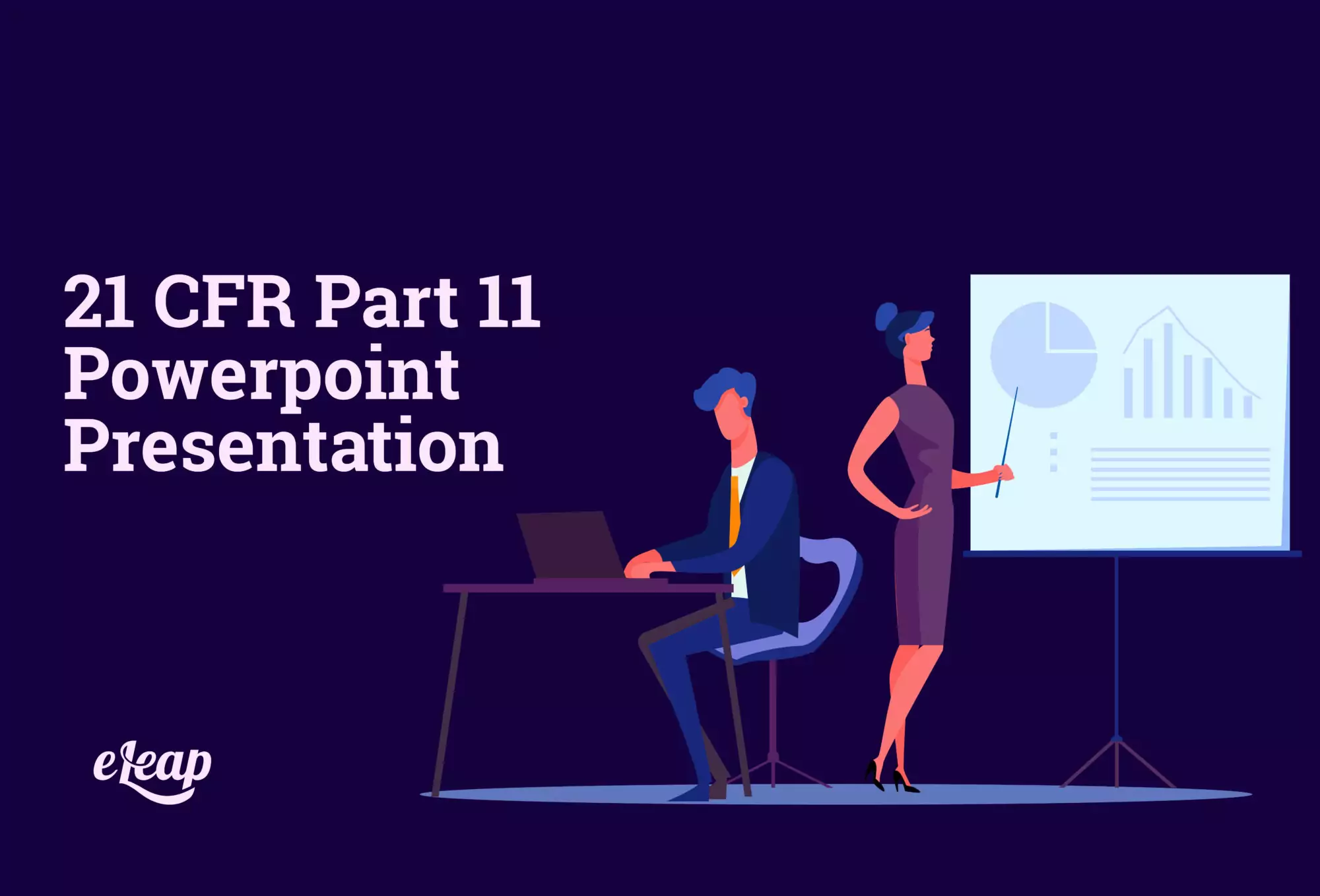21 CFR Part 11 Powerpoint Presentation
Tips for Creating a Compliant Policy for Your Life Sciences Organization

Title 21 CFR Part 11 covers several different topics related to data security and the requirements for software used by life sciences companies, pharmaceutical brands, and biotech companies. One of the very first things that CFR Part 11 points out is that nothing is automatic or guaranteed – that is, just because software exists doesn’t promise that it passes all compliance guidelines. After all, while your industry might require it, the general public doesn’t need special data security compliance in place for their Microsoft Office products like PowerPoint for presentations, Excel, and others. 21 CFR Part 11 for your PowerPoint presentation files and training courses means you are deploying content on a validated system.

With that said, note that Microsoft Office is not automatically compliant with Title 21 CFR Part 11. You can make it compliant in various ways, including using it on a system that is compliant and that features all of the necessary security protocols. However, you cannot display secure electronic records or share them in Office, including PowerPoint, without changing the format, adding additional security protections or encryptions, or otherwise making sure that no one has access to the slideshow unless they have been given explicit permission.
Usually, this involves some other kind of tool that will help you authenticate and secure the software or even use your own VPN (virtual private network) to allow for secure access to the software, no matter what kind of business you’re in.
What is CFR Part 11 and Why Does it Matter?
The FDA created Title 21 CFR Part 11 all the way back in 1997 when digital records first became a subject of concern. This regulatory standard was put into place to monitor and manage several aspects of data security and authentication for life sciences and other companies that handle sensitive and private electronic data. The FDA provisions set forth were designed to focus on:
- Use of authority and device checks
- Use of operational system checks
- Limiting system access to authorized parties
- Determining whether those who are maintaining, using, and developing electronic systems have the right training and experience
- Establishing policies that hold people accountable for actions taken under their electronic signature
- Appropriate systems documentation controls
- One and closed system requirements
- Electronic signature guidelines and requirements
The entire premise is about creating a secure, authenticated way to monitor and regulate electronic records and signatures. It is a guideline for setting rules and requirements as much as it is a hard-and-fast guideline for software, hardware, and other tools used by any organization in the life sciences, medical device, or biotech industries.
How to Make Office Compliant
Like all software, PowerPoint is one of the tools that you will find yourself using on a regular basis, and it might not be explicitly compliant under this statute. However, if you are aware of what you are doing, it will be easy to make the tool compliant—you can find other ways to authenticate it or add it to the list of approved digital records solutions. Some people will just create presentations without a second thought, unknowingly sharing sensitive data in a format that is not properly secured. That can spell disaster fast.
If you need to make Office, PowerPoint, or any other tool compliant with CFR Part 11, or at least make sure that it meets the basic criteria, you will have a few different options. You can upgrade to a version of Office that is specifically for these types of organizations and that includes the electronic records and signature tools and provisions that are set forth by the law.
You could also opt to use the software on a secure system that has already been validated as a tool for electronic records and electronic signatures. Then, it doesn’t matter whether the app itself has compliance because the entire server that it’s being used on will comply with all of the guidelines and mandates set forth regarding these two issues.
Can You Use PowerPoint Presentations without Compliance?
If you opt not to explore how to make your PowerPoint presentations compliant with this statute, you will probably be wondering whether you can even still use the tool. Technically, you could use it as a viable business tool, but you wouldn’t be able to share sensitive information or individual user details because the tool has not be vetted properly. Another concern is that if you are sharing information in these slides that is sensitive, it could end up in the wrong hands.
It’s rare that things like this happen, but it’s still something that needs to be on your radar. You never know when you’ll find yourself trying to work on a project only to realize that you’ve got to pause for compliance before you can move forward. There are several tools that you can use and several ways they can be used without falling outside of CFR Part 11, so long as you are following all safety and effective use protocols.
Setting Goals for Your Organization
Is CFR Part 11 compliance the goal? Connect with our experts. It should be if it isn’t already, and these considerations should be on your mind. Tools like PowerPoint, Excel, and other Microsoft programs allow users to create robust documents, reports, and presentations and know that the information is protected and secure, no matter what.
Take the time to include compliance in your goals and check out whether your entire software stack is compliant with CFR Part 11, or whether it needs to be. This can help you figure out where to take the guidelines set forth by the FDA and how to use those guidelines to ensure compliance for your organization. It can also allow you to take a proactive approach so that you will never have to worry about the compliance of specific software tools because you’ll know which ones you want to use and where they stand.
Beyond the technical lingo and rules, CFR Part 11 isn’t nearly as scary as some people make it out to be. When you are investigating the regulation of your software tools used for creating and managing electronic records, these are the things that you need to keep in mind.